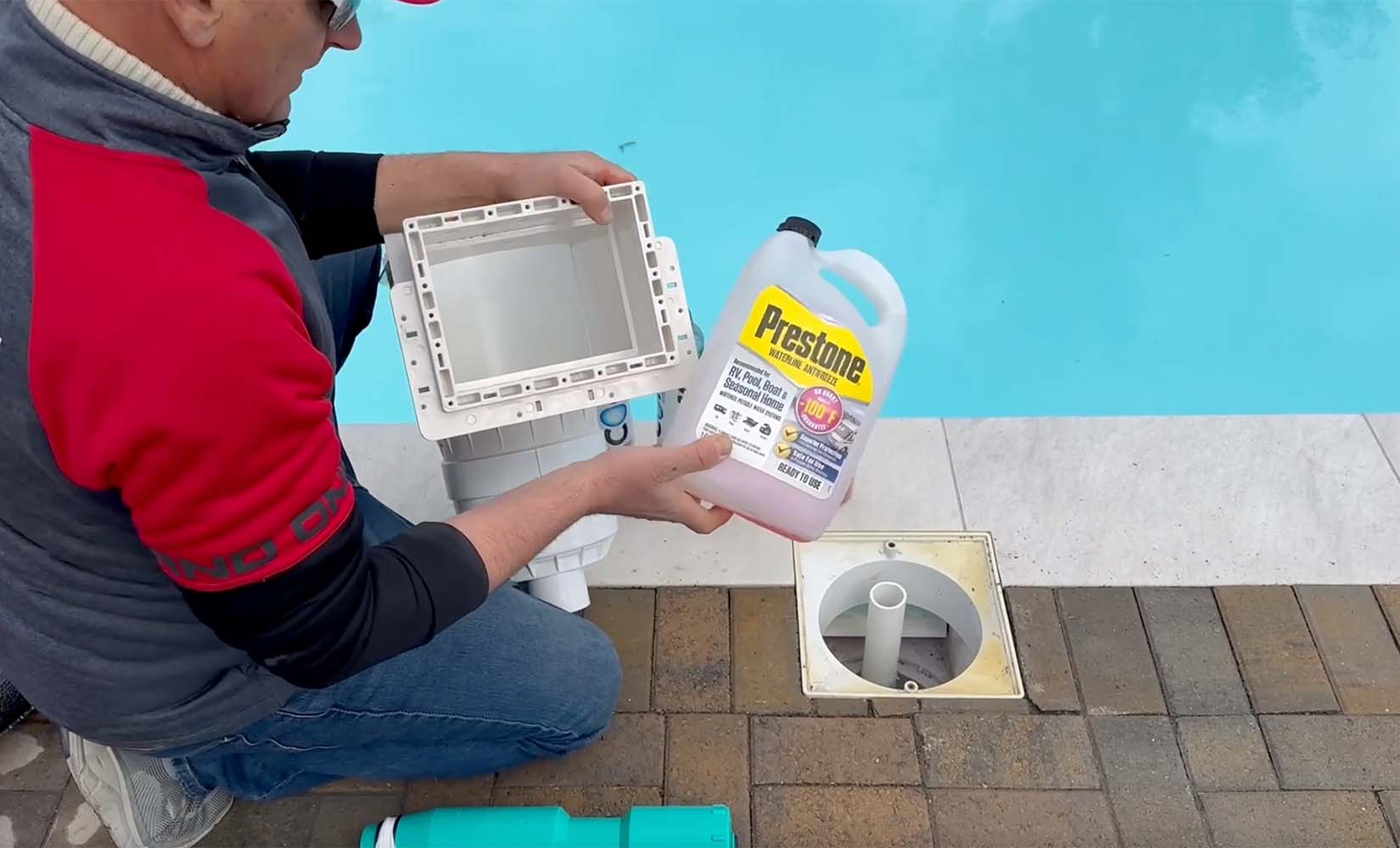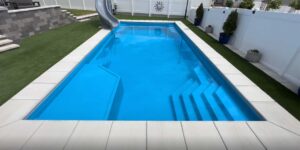No matter how well a fiberglass pool is installed, improper winterization can lead to costly repairs. Utah’s harsh winter freezing conditions can freeze the water in pipes, jets, or skimmers, causing cracks and structural damage. Some issues, such as hidden leaks, might remain undetected for months, potentially compromising the long-term stability of the fiberglass pool. Proper winterization requires extra effort but is essential to preserve the pool’s integrity and prevent expensive repairs. Here are some key tips for effectively winterizing your fiberglass pool:
Tip #1: Protect the Pool Skimmer from Freezing
The skimmer is particularly vulnerable to freezing conditions, which can cause it to crack or become damaged. To protect it:
- Use foam or other insulating materials to block off the skimmer.
- Add non-toxic pool antifreeze liquid to the skimmer to prevent freezing and expansion.
- Ensure the skimmer is thoroughly winterized to avoid ice buildup.
Tip #2: Drain Spa Jets and Pool Plumbing Completely
Any water left in the spa jets or pool plumbing can freeze, expand, and cause cracks or leaks. To prevent this:
- Use a pool blower or air compressor to remove all water from the plumbing lines and spa jets.
- Pour pool-grade antifreeze into the lines as a precaution.
- Cap off exposed openings to prevent water from re-entering.
Tip #3: Maintain a Higher Water Level During Winter
Unlike other pools, a fiberglass pool requires a higher water level during winter for stability:
- Keep the water level slightly higher than normal to help distribute the weight of snow and rain evenly across the pool cover.
- A properly supported cover prevents excessive stress on the pool edges and structure during winter.
- Check the water level periodically throughout the winter to ensure it remains within the recommended range.
Additional Tips for Successful Winterization:
- Cover the Pool Securely: Use a durable, winter-grade pool cover to shield the pool from debris, snow, and ice. A properly fitted cover will also reduce the risk of contaminants entering the pool during the off-season.
- Monitor the Pool Area: Regularly inspect the pool area for signs of damage, such as ice accumulation or shifting snow loads on the cover.
- Consult a Professional: If you’re unsure about the winterization process, it’s worth hiring a professional to ensure your pool is properly prepared for the winter months.
By following these steps, you can significantly reduce the risk of winter-related damage to your fiberglass pool, ensuring its longevity and minimizing repair costs.


